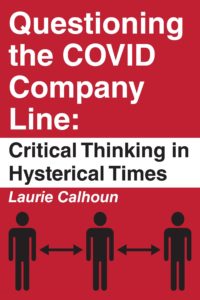Back in the 1980s, President Ronald Reagan famously championed the Strategic Defense Initiative (SDI), referred to colloquially as “Star Wars.” Forty years later, in 2025, President Donald Trump has thrown his enthusiastic support behind what is tantamount to a rebranded, bright and shiny new version of SDI: the Golden Dome. It is surprising that so few commentators in the mainstream media have made the connection, apparently unaware of why the Star Wars program was abandoned.
Instead, pundits, politicians, and government officials such as Vice President J.D. Vance and Secretary of Defense Pete Hegseth all speak of the prospect of the Golden Dome in reverent tones, evincing a state of manifest awe. Apparently either altogether unaware or insouciant of the many boondoggles to come, among other reasons why the original SDI project was scrapped, those who express ardent support of what is now being pushed as Trump’s project have bought into the seductive marketing line (as it was last time) that this is all a noble quest to keep Americans safe, by all means necessary.
Among other notable problems, the expansion of defense capacities into outerspace, which recommenced in earnest with the formal re-establishment of a U.S. Space Command (SPACECOM) in 2019, during Trump’s first administration, will in all likelihood initiate a new arms race. The original SDI program was criticized for abjectly violating the U.S.-U.S.S.R. Anti-Ballistic Missiles (ABM) Treaty of 1972, which limited each signatory’s anti-missile systems to two sites with a maximum of one hundred interceptor missiles each. The George W. Bush administration withdrew the United States from the ABM treaty in 2002, claiming that it hindered the development of technologies to address novel threats. It is worth remembering that the same administration also stated in its 2002 NSSUSA (National Security Strategy of the United States of America) that “Our best defense is a good offense.”
A second, purely practical, reason for opposing President Reagan’s SDI initiative was its exorbitant cost. That reason appears not to be regarded as prohibitive by the current administration, which has proposed a more than $1 trillion military budget for the coming year, despite the steadily augmenting $37 trillion government debt, and seemingly oblivious to the fact that the Pentagon has failed seven audits in a row, and “lost track of” trillions of dollars. The initial outlay for the project, included in the “Big Beautiful” allocations bill which passed in the House of Representatives but has a handful of detractors in the Senate, was $25 billion. The Trump administration maintains that the Golden Dome can be completed by the end of 2028 at a cost of $175 billion.
Everyone with any familiarity with the history of the Pentagon and its technological innovation wing, DARPA (the Defense Advanced Research Projects Agency), should recognize that such a conservative estimate is a tried-and-true tactic used to secure support for massively expensive Defense Department projects. Once initial investments have been made and projects begun, they almost always move ahead unimpeded, effectively rubberstamped on the grounds that investments have already been made and projects begun. In reality, the incredible complexity of a defense apparatus erected to operate from outerspace and cover all types of allegedly impending threats—from nuclear attack to the use of hypersonic weapons, in addition to intercontinental ballistic missiles—would, as analysts have observed, undoubtedly take much longer to complete and cost multiple times the initial, misleading estimate being used to win support for the project. Some critics have gone so far as to characterize the Golden Dome as “a dangerous fantasy.”
Small wonder, then, that military industry leaders such as Lockheed Martin Chief Operating Officer Frank St. John and Chief Executive Officer Jim Taiclet have been out on the media circuit to push the program, with what must have been the same bullet points used to persuade President Trump himself, a man who early in his second term publicly expressed interest in cutting the Defense budget in half and abolishing nuclear weapons. Peace-loving people were astonished and elated by Trump’s unscripted words:
“At some point, when things settle down, I’m going to meet with China and I’m going to meet with Russia, in particular those two, and I’m going to say there’s no reason for us to be spending almost $1 trillion on the military…and I’m going to say we can spend this on other things…When we straighten it all out, then one of the first meetings I want to have is with President Xi of China and President Putin of Russia, and I want to say let’s cut our military budget in half. And we can do that, and I think we’ll be able to do that.”
Unfortunately, in the weeks to follow, Trump must have been presented with the same golden graphics now being used to garner popular support in pro-defense segments on Fox News and other channels, and also in newspapers, which deceptively argue that the Golden Dome is a purely defensive capacity and should, therefore, be supported by any reasonable person. (Critics are obviously not patriots!) As an added bonus, insist the proponents in the defense industry who stand to gain the most, the “essential for national security in these dangerous times” project will also generate many new jobs, all across the United States, in many neglected sectors of industry—for it will be built domestically, using only American labor!
By March, Trump was already boasting about “his” big, beautiful, Golden Dome, insisting that Americans had given him a mandate to protect them—no doubt one of the arguments used to bring him around, in addition to the glittery gold befitting of the Trump Tower featured in power point presentations and prospectus reports. By May 2025, President Trump and Secretary of Defense Pete “Lethality First” Hegseth, eyes glinting, were regularly singing the praises of the Golden Dome, as though anything about it had anything to do with gold beyond that which will fill the coffers of war profiteers as the defense budget is not slashed in half but dramatically augmented.
Given what appeared in February 2025 to be Trump’s own pacific inclinations, it might seem as though someone somehow managed to defeat the president’s oft-expressed natural aversion to the mass homicide which war represents, in addition to the wastefulness of spending billions of dollars to defend against non-existent enemies. What is more plausible, however, is that Trump was persuaded to believe that the best way to avoid war is in fact to have a military so formidable and a deterrence capacity so overwhelming that no one will ever dare to challenge the United States.
The current U.S. military budget already exceeds the combined military budgets of the next nine countries, so one might have thought that the deterrence threshold had already been met. Indeed, throughout the Cold War, and in the decades since it ended, the only adversaries which have dared to attack the United States have been members of factional terrorist groups, who would in no way be deterred by the development of a defense capacity in outer space, for they operate with their feet firmly on the ground. In fact, the most obvious result of extending the military into outerspace will be to motivate other governments, too, to increase their deterrent capacity, by swiftly creating weapons of mass destruction of all types, including nuclear warheads, so that they will never be faced with the horror suffered by the people of Iraq in 2003, when the U.S. government launched a preemptive attack in order to prevent the future development of such arms by President Saddam Hussein.
The Golden Dome was originally named America’s Iron Dome and said to be inspired by Israel’s Iron Dome, even though Israel is the size of the state of New Jersey, thus raising doubts about the feasibility of building such a “shield” to cover the vast land mass of the United States. (Are Hawaii and Alaska to be included? What about the non-state U.S. territories?) It is unclear when or why the project was renamed, but perhaps Trump himself suggested it in one of his “very stable genius” moments, after which his cabinet minions all gushed over the idea, given their well-demonstrated modus operandi. If someone other than Trump came up with the name, then it certainly was a stroke of rhetorical savvy on the part of those tasked with winning the president’s imprimatur, given that he is so keen to be remembered for setting precedents which are bigger, better, and more “special” than those of any of his predecessors. (Remember Trump’s Operation Warp Speed vaccine? And the omnipresence of Pfizer CEO Albert Bourla and vaccine entrepreneur Bill Gates in the media, praising the Trump administration and promoting the shot? Same template, mutatis mutandis.)
Infeasibility was the death knell for “Star Wars”: the interception of missiles by missiles was never demonstrated to work. The thought experiment was ingenious, in theory, but the real world prototypes failed. What was worse, it became clear at some point that the very launching of dual-capacity missiles to intercept missiles erroneously detected (for mistakes will be made, as in the Tonkin Gulf incident) might very well instead end up by triggering a hot war, with the “defensive” missiles interpreted as “offensive” when detected by other countries’ anti-missile defense systems. Ironically, then, the supposed system of deterrence might end by causing the feared nuclear war which it was intended to prevent.
Notwithstanding Reagan’s adamant support of SDI, it eventually became undeniable that the enormous investment in space defense would be for naught. Even if it did not lead to a devastating world war, the system would never work as advertised, and thus would amount to not an enhanced defense capacity but a shameful waste of taxpayer funds. This infeasibility argument appears to have been erased from Trump’s mind by the success of Elon Musk in doing other “big” things. Among other examples, Musk’s motley assortment of companies have succeeded in getting rockets to return intact to their launch pads, revived the electric car industry, and inserted microchips into human beings to give them capacities which they never had or had lost.
One surmises that Elon Musk has had a great deal to do with vivifying the imagination of Donald Trump as he dreams of what he may in fact believe will be literally a golden dome, as bright and shiny as the Trump tower. The president has exulted repeatedly over Musk’s technological feats, specifically noting that no one else anywhere in the world has managed to do the “special” things which he has done. Trump has watched and raved over the firing and re-capture in their launchpads of spacecraft invented by Musk’s company SpaceX. Having seen what can now be done, Trump seems to believe that it should be possible in the twenty-first century to realize Reagan’s dream. The Elon Musk success stories have likely demonstrated to Trump’s satisfaction that his administration can create a functional Golden Dome, even though Reagan-era scientists failed to bring SDI to fruition. That was then, and this is now.
In any case, the most glaring distinction between the Reagan-era Star Wars program and the proposed Golden Dome is that the primary pretext for the construction of such a massive apparatus of national defense, namely, the danger of a communist takeover of the world by the U.S.S.R., no longer exists. The most pressing question which must be addressed is therefore this: what, precisely, is The Golden Dome supposed to be protecting Americans from? Reagan’s lavish defense spending probably did, as his supporters have often observed, contribute to the fall of the bona fide communist U.S.S.R., which simply could not keep up economically with the capitalist U.S.A. But the Trump SDI redux might well have the opposite effect, initiating a new cold war and, even worse, a hot war with China and/or Iran.
China and Iran have been portrayed by virtually everyone in the new administration as clear and present dangers to the United States, but when was the last time that the government of either of those countries invaded any other country? This is yet another example where smooth-talking industry executives no doubt exploited presidential ignorance (which happened under Obama and Biden as well). Trump’s confusion over matters as basic as the difference between the national debt and the trade deficit have made him vulnerable to hawks’ portrayal of China as a mortal enemy. Difficult to believe though it may be, Trump appears not to understand that a “trade deficit” occurs when one country imports more than it exports, which implies nothing more and nothing less than that the country with the trade deficit produces fewer and less desirable products—often more expensive—than the country from which it imports products which its people need and/or desire.
It is not without reason that in his public addresses, for example, to graduates of the Army College, Secretary of Defense Pete Hegseth purposely and repeatedly refers to China as “communist China.” The same expression is used by Secretary of State Marco Rubio and staunch advocates of war such as Senators Tom Cotton (R-AR) and Lindsey Graham (R-SC), in spite of the fact that the trade deficit between the United States and China demonstrates no more and no less than that China is a valued partner in global capitalistic trade. It may be true that China’s own investment in its military has increased, but it is meager indeed when compared to that of the United States. Most significantly, to reiterate, China has not initiated any war in recent history. What is especially perplexing to peace-loving people is that the current proposed Golden Dome will have the most obvious effect of fomenting conflict with China, provoking its government to further increase defense spending and thus exacerbating the already deteriorating relations caused by Trump’s puerile imposition of punitive tariffs to protest the trade deficit.
As far as Iran is concerned, Zionist supporters of Israel and Prime Minister Benjamin Netanyahu’s ruthless razing of Gaza insist that Iran has been funding terrorist groups such as Hamas in Israel and the Houthis in Yemen. Even granting that premise, the question would nonetheless remain: how would a defense system in outerspace protect people on the ground from the sorts of activities—such as suicide bombings and the sabotage of ships—in which violent factional dissidents regularly engage? Note that Israel’s analogue to the Golden Dome, the Iron Dome, altogether failed on October 7, 2023 to prevent the carnage perpetrated by Hamas on that day. Nor has the Iron Dome helped to bring the criminals to justice. Instead, indiscriminate bombing continues to wreck Gaza while terrorizing—when not maiming, killing, or leaving bereft—millions of innocent human beings.
Rather than offer discussions of the parallels between SDI and the Golden Dome—both the motivations and the very real problems with such schemes—the mainstream media has bought into the notion once again, blinded by the shiny “new” object now claimed by Trump to be “big and beautiful,” just like “his” omnibus bill (though he has never read it), which some analysts have argued will dramatically increase rather than decrease the already exorbitant national debt. As Democrats and Republicans conspire with the president to eliminate the debt ceiling altogether, the economic prospects of future Americans continue to be imperiled by the country’s current profligate ruling class as they set in motion a reckless new Cold War which will not defend the people of the United States but only enrich the many military industry entrepreneurs who stand to profit handsomely from all of the new structures which they will be tasked to build.
It was difficult to suppress the suspicion that Musk’s exit from DOGE (the cost-cutting Department of Government Efficiency) was timed to make it possible to enlist his companies to contribute significantly to the Golden Dome project. Since then, however, Musk’s vocal opposition to increasing the U.S. national debt—which he believes is guaranteed by the omnibus bill currently on the floor of the senate—even at the risk of losing all of his federal government contracts, casts into doubt that DOGE-exit narrative. Massive new contracts and government allocations of money will be needed to undertake an SDI-type system, and Musk’s companies, involving everything from electronic vehicles to robotics to space travel to transhuman cyborg (Tesla, SpaceX, Neuralink), might well have been beneficiaries of the government’s largesse in constructing what no one has ever constructed before. That Musk has recently spoken out against Trump’s Big Beautiful Bill, soberly warning that the country is on the fast track to bankruptcy, in no way detracts from the technological feats of SpaceX, though the company may be excluded from the Golden Dome project in retaliation for what Trump no doubt views as Musk’s betrayal. (Or perhaps the couple will kiss and make up. Only time will tell…)
Should the Golden Dome project move ahead, it will mean more economic pain for the people of the United States, who continue to struggle with soaring costs of living: housing, basic means of sustenance and healthcare. About 800,000 people in the United States are currently homeless, and the overdose epidemic (taking many thousands of lives each year) rages on as hopeless persons turn to drugs as the means to escape from the sordid reality which life in America has for them become. None of the people currently suffering in the United States would be helped in any way by the construction of the Golden Dome, which, on the contrary, would threaten the health, happiness and livelihood of all successful Americans as well. Secretary of Defense Pete Hegseth described the Golden Dome as a “game changer,” which it would be, in the sense that it would represent the effective takeover of the government by the Pentagon and its associated war profiteers.
Such a projection might sound hyperbolic, were it not for two other planks of the gloomy dystopic future being quietly put into place. First, President Trump signed an executive order on March 20, 2025, ostensibly to “eliminate information silos” by collecting and organizing data on all U.S. citizens, and he invited the company Palantir, originally funded by the CIA, to do this. The founder of Palantir, Peter Thiel, who is also a major stockholder, has connections to both Elon Musk and J.D. Vance, having collaborated with Musk on Paypal, and having donated a record-breaking $15 million to Vance’s very first election campaign, allowing him to serve in the U.S. Senate before being selected as Trump’s running mate. Second, a ban on the regulation of artificial intelligence policies by state and local authorities for the next decade has been written into the “Big Beautiful Bill,” unbeknownst to most of the congresspersons who voted for without reading the legislation.
Having seen what happened during the Coronapocalypse, the implications of the new apparatus of data collection, surveillance and artificial intelligence capabilities should be evident enough. If the Republicans fall out of favor due to their failure to manage the national debt and improve the standard of living for Americans, then the Democrats will return to power fully armed with the means to suppress all dissent against whatever their policies may be, most likely to include the antithesis of the anti-DEI, anti-trans, anti-immigrant agenda of the Trump administration.
The war party duopoly will needless to say continue to occupy the White House.
































